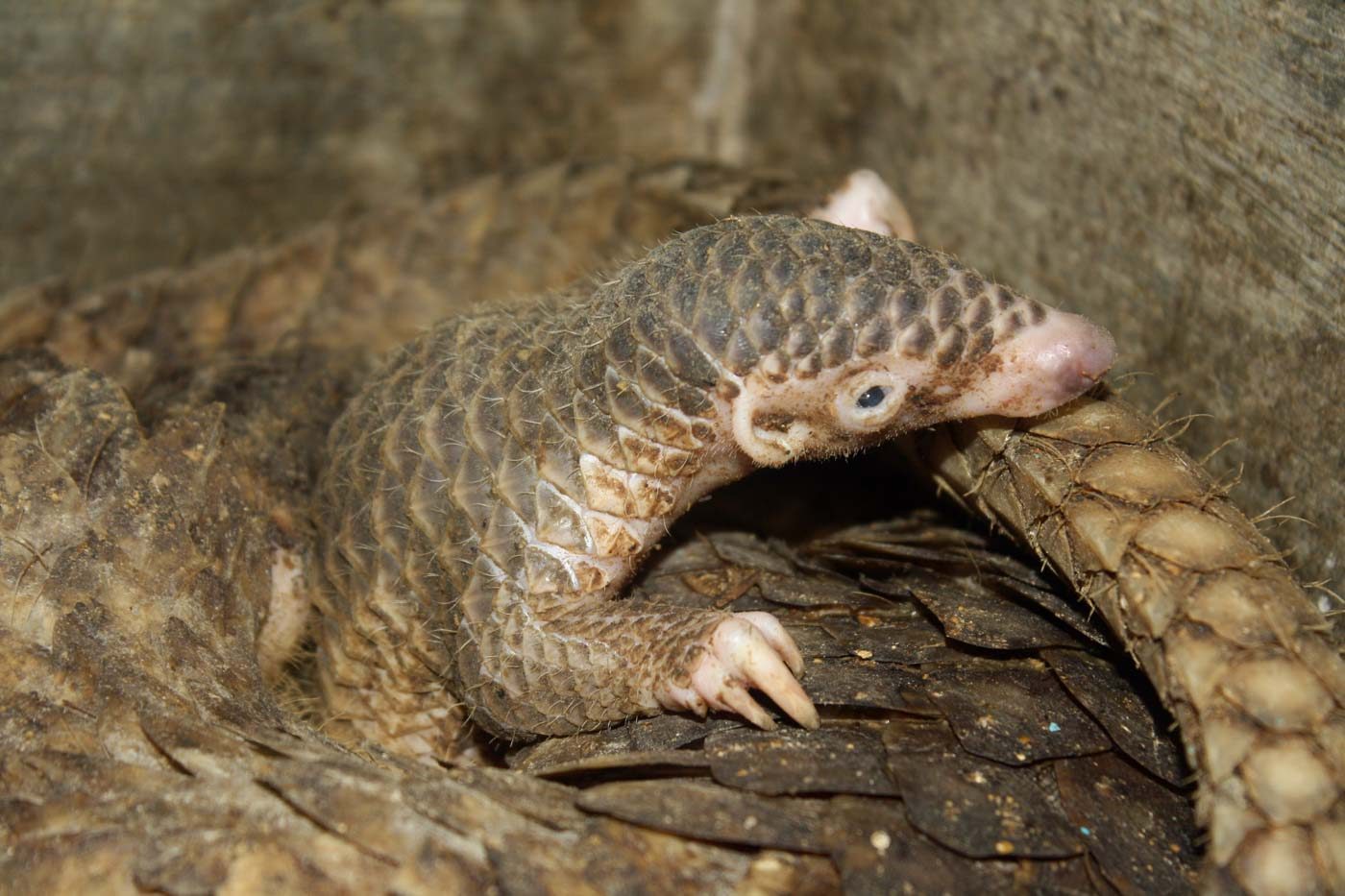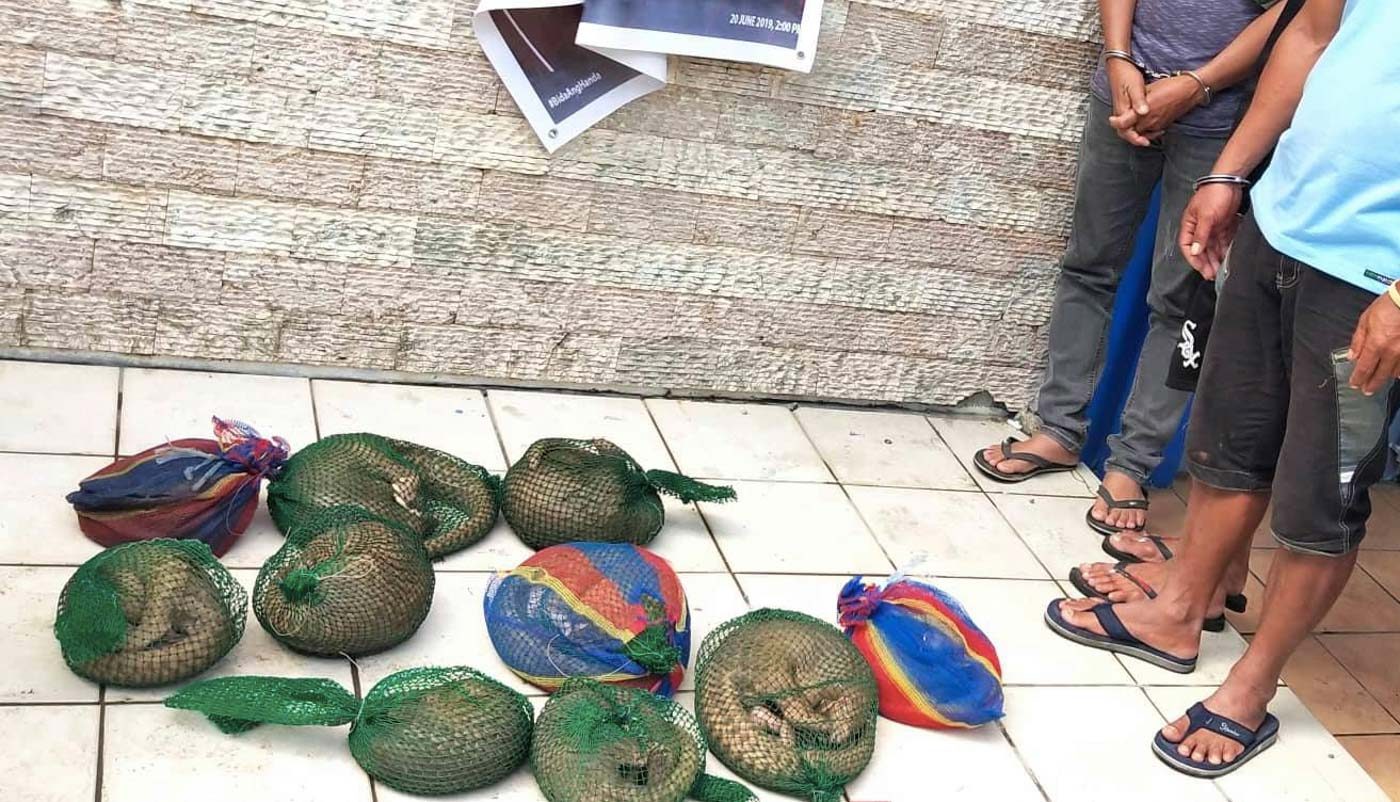SUMMARY
This is AI generated summarization, which may have errors. For context, always refer to the full article.

This compilation was migrated from our archives
Visit the archived version to read the full article.
Indonesia: Cash transfers suggest sophisticated criminal network
Seized pangolin scales and meat. Money transfers. Shipments to China. Tip-offs. These are the hints that point to a network of pangolin smugglers in Indonesia. Denials. Silence. Lack of direct evidence that could turn unusual coincidences into bulletproof evidence. These are the challenges faced by law enforcement, and us as we investigated the pangolin trade in Indonesia.
A review of court records, dozens of interviews with poachers and the police have provided the clearest indication yet that the pangolin trade in the archipelago nation has professionalized. It has become so sophisticated that it reminds experts of the drug trade.
In Sumatra, Java, and Kalimantan, pangolins provide an essential balance to the ecosystem, feeding on pests which affect plants such as the oil palm. However, syndicates in these areas “hunt on a massive scale during the transition from rainy season to dry season,” Sustyo Iriyono, the official at the Environment and Forestry Ministry in charge of fighting the illicit pangolin trade, said in an interview.
Here, investigators typically aim for the poachers and then try to work their way up the syndicate through vendors and middlemen. Rarely do they get very far.
The premiums on the trade leave plenty of room for middlemen. In Indonesia, a poacher might get around $20 for a kilogram of pangolin meat. The same meat could sell for up to $1,200 elsewhere. The value of pangolin scales multiplies 30-fold along the supply chain.
Sustyo estimates that Indonesia is the world’s largest illicit exporter of pangolin meat and scales, even though pangolins in Indonesia cannot compete with the African subspecies in terms of size. Shipments mostly go to China, sometimes through Vietnam and Hong Kong.
Asked about the smuggling routes, he said that the trade networks have become “well-organized.”
“In the past, smugglers used cargo planes,” he said. “After this was discovered, they began altering the manifests of shipping containers. Pangolins are hidden among export commodities such as dried squid and fish. Some evade detection by going through small ports, where fishing boats are involved.”
We retraced some recent seizures near Medan, Sumatra’s largest city, and found indications of an extensive trade network.
The port city is already known as a major smuggling hub. Police Brigadier General Dedi Prasetyo, a national police spokesman, told us that Medan in northern Sumatra, Surabaya in eastern Java, and Pontianak in western Kalimantan are the most significant transit locations for pangolins. They are often concealed in frozen fish, squid, and oysters, Dedi said.
Several seizures and court cases point to a network linked to a man called Robert Ongah. Also known by the nickname Atiam, he could not be reached for comment despite several attempts.
“I represent Pak Robert,” said an employee of an alcoholic beverages maker in Jakarta, using a deferential term. “He has no comment, and all of the questions in the interview request are wrong.”
Ongah is the owner of Tetap Jaya, a frozen fish export company, with an office in Medan, among other ventures. He also controls other enterprises, including the brewer, where we reached an employee in Jakarta. Police officers told us that they traced at least 50 billion Indonesian rupiah, or about $3.5 million, of transfers from suspected intermediaries to him.
More than half of these funds were traced coming from Ongah’s accounts going to the account of one Edy Soerja Susanto, police said. These funds then reached wildlife dealers who were later arrested.
It is unclear whether Edy is being investigated. Reached by phone, he denied involvement in the pangolin trade. “I don’t know Robert Ongah,” he said, before ending the call.
The network appeared even wider and tied to other, more sinister, crimes, investigators told us. Dian Ediana Rae, the deputy chair of the Financial Transaction Reports and Analysis Centre, said some transactions linked the network to the notorious convicted drug lord Togiman.
Togiman has been sentenced to death twice, in 2016 and 2017, for various narcotics cases, including for continuing his operations behind bars. His bank account balance: 6.4 trillion rupiah, or $458 million.
Philippines: Law no deterrent to poaching syndicates
In July 2019, a Philippine court convicted 3 men of violating the country’s wildlife protection law. They were caught in possession of 10 Philippine pangolins, a domestic subspecies, at a checkpoint in Tagaytay City, Cavite, some 60 kilometers south of the capital Manila.
While the case was called the first successful conviction of wildlife traffickers from Palawan – where the Philippine pangolin is endemic – the penalty for the crime was light. The court sentenced each poacher to 3 months of imprisonment and a fine of 20,000 pesos, or about $385. In August, the 3 men posted bail and filed a petition for probation.
Emerson Sy, executive director of the Philippine Center for Terrestrial and Aquatic Research, said that given such penalties, the law itself is not a deterrent to poachers.
“What’s noteworthy is that the same people are involved [in the illegal trade]. For example, one main buyer who is a foreign national has already been caught many times but still operates. Because the penalty in illegal wildlife trade – it’s bailable – if a poacher gets caught, he only posts bail, then he can get out,” Sy said.
Sy is one of the authors of a report that analyzed seizure data in the Philippines from 2001 to 2017. The report, published in 2018 by TRAFFIC, a global NGO working to investigate the wildlife trade, found 38 seizure incidents involving 667 pangolins. The figure is small compared with volumes reported elsewhere, but considering that the populations of Philippine pangolins have declined by more than 50% over 21 years, it is a significant number.
Sy said the seizure data they analyzed from different sources may just be “the tip of the iceberg.”
“The Philippine pangolin can only be found in the Philippines, in the province of Palawan, so the habitat is really small,” he said. “Any disturbance based on additional poaching and so on has a huge effect on them.”
TRAFFIC researchers believe that demand has increased over the past decade. One factor, Sy said, is the increasing demand, especially in Metro Manila, where pangolin meat is sold as a luxury food item and its scales are sold for traditional medicine.
The 3 men who were caught in Tagaytay City smuggled the 10 pangolins out of Palawan for illegal trade in the capital.

But Sy explained that domestically, most people who consume pangolin meat are still foreigners “because [Filipinos] don’t have a tradition of eating pangolins.” Some locals also consume it, he said, but only when they happen to encounter it, as they wouldn’t intentionally look for it.
“The Philippine pangolin can only be found in Palawan, so the habitat is really small. Any disturbance based on additional poaching has a huge effect on them.”
Pangolin meat can sell for US$3 to US$5 per kilogram, while scales sell from US$130 to US$190 per kilogram. Meanwhile, the TRAFFIC report said that in Metro Manila, live or frozen pangolins and cooked pangolins sell for US$233 and US$272, respectively.
“The poachers, the ones who hunt the pangolin, are usually Filipinos. The middlemen, those who go to the communities to ask them to hunt, could be either Filipinos or foreign nationals. The middleman will then pass it on to the wholesalers or the consolidators, who could be either a Filipino or a foreign national. That consolidator could be the one to sell the pangolin directly, or there’s another layer from another location, for example, in Metro Manila. From that point, that goes directly to the buyer,” Sy explained.
However, as Sy pointed out, those in the “lower levels” of the smuggling chain – the poachers and traffickers – are often the “sacrificial lambs” who get arrested by law enforcement.
Data from the Palawan Council for Sustainable Development (PCSD), the agency mandated to implement the Philippines’ wildlife law in the island province, showed that 33 people were arrested in relation to the illegal pangolin trade from 2010 to 2018. At least 16 criminal cases were filed during the same period.
“We have to find the ones who order the hunting, those who finance it. Because if you don’t arrest them, poaching will never end,” Sy said.
In 2016, the Philippines proposed uplisting the Philippine pangolin to Appendix I of CITES (Convention of International Trade in Endangered Species of Wild Fauna and Flora). The government proposal said that the Philippine pangolin is “threatened with extinction and is detrimentally affected by international trade and habitat loss,” and that it “has been documented in international trade with China and Malaysia, and possibly with Vietnam.”
The 2018 TRAFFIC report, meanwhile, said that international trade routes could not be determined from the seizure data that the authors analyzed because “many of the records are without background information aside from the location of seizure and type and quantity of pangolin parts seized.”
“We have to find the ones who order the hunting, those who finance it. Because if you don’t arrest them, poaching will never end.”
“Foreign nationals (for example from mainland China and Taiwan) residing in the country have also been implicated in several seizures,” the report said, adding that it remains uncertain “whether this feeds a local market catering to visitors and/or foreign nationals residing in the country or an international market.”
Sy pointed out, however, that local demand for pangolin scales used in traditional medicine is not as significant as overseas demand. “The demand is mainly in China and Vietnam, where the scales are used,” he said.
With all these challenges on multiple fronts, there is still much to be done. There is also a lack of public awareness about the Philippine pangolin, which is considered one of the least studied species of pangolin.
In 2018, different conservation groups in the country came together and designed a 25-year roadmap for the conservation of the Philippine pangolin. The PCSD will conduct a study to identify the population strongholds of the Palawan pangolin, with the end goal of declaring these areas as critical habitats for further protection. (To be continued.) – Rappler.com
This is part of The Pangolin Reports’ “Trafficked to Extinction,” a global report investigating the illegal wildlife trade of pangolins across Asia, Africa and Europe.
TOP PHOTO: A pangolin rescued from traffickers in Vietnam recuperates at a rehabilitation center run by NGO Save Vietnam’s Wildlife. Screenshot courtesy of Centre for Media and Development Initiatives.
More from this report:
Add a comment
How does this make you feel?





There are no comments yet. Add your comment to start the conversation.